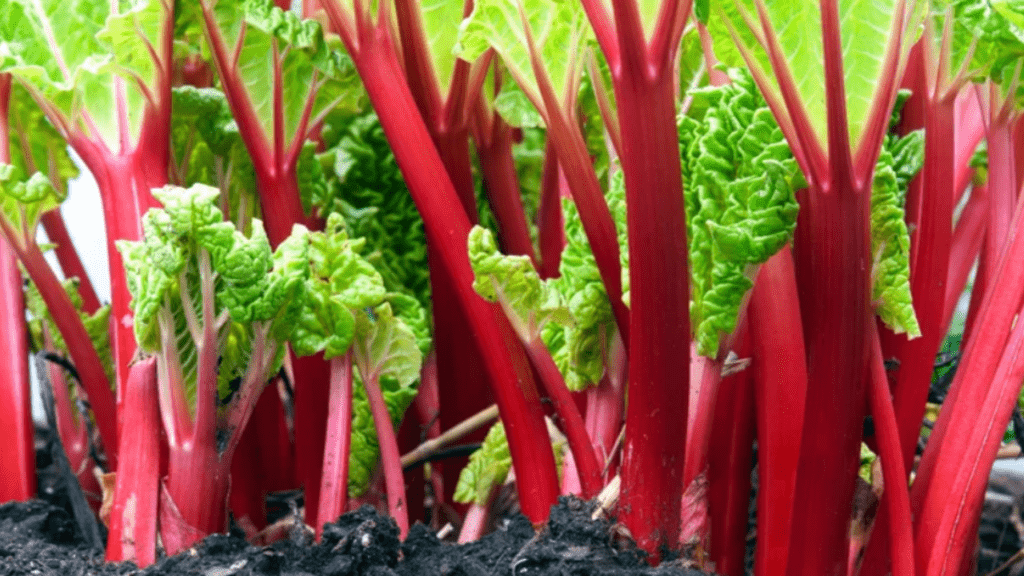
Understanding Rhubarb Leaves: How to Use Them Safely
Rhubarb leaves are a beautiful and vibrant addition to any garden, but they can also be potentially harmful if not used properly. In this post, we’ll dive into the dos and don’ts of using rhubarb leaves safely, as well as explore creative ways to incorporate them into your cooking and gardening. Understanding the potential health risks and learning how to use Rhubarb leaf responsibly is key to enjoying their unique benefits without any negative consequences. So let’s explore the fascinating world of rhubarb leaves and how to use them safely in your everyday life.
Table of Contents
ToggleUnderstanding Rhubarb Leaves
Overview of the rhubarb plant, including its botanical characteristics and common uses.
Rhubarb is a versatile plant that is not only visually appealing in a garden, but also has a variety of uses in cooking and baking. The stalks are the most commonly used part of the plant, with their tart flavor making them a popular ingredient in pies, jams, and sauces. However, the leaves of the rhubarb plant are often overlooked, as they contain oxalic acid which can be toxic if consumed in large quantities. It’s important to handle Rhubarb leaf with caution and never consume them, as they can cause nausea, vomiting, and other health issues. Despite this, there are still ways to safely use Rhubarb leaf in your garden and kitchen. For example, they can be used as a natural insect repellent or as compost for your garden. By understanding the potential risks and taking proper precautions, you can enjoy the beauty and benefits of rhubarb leaves without putting your health at risk.
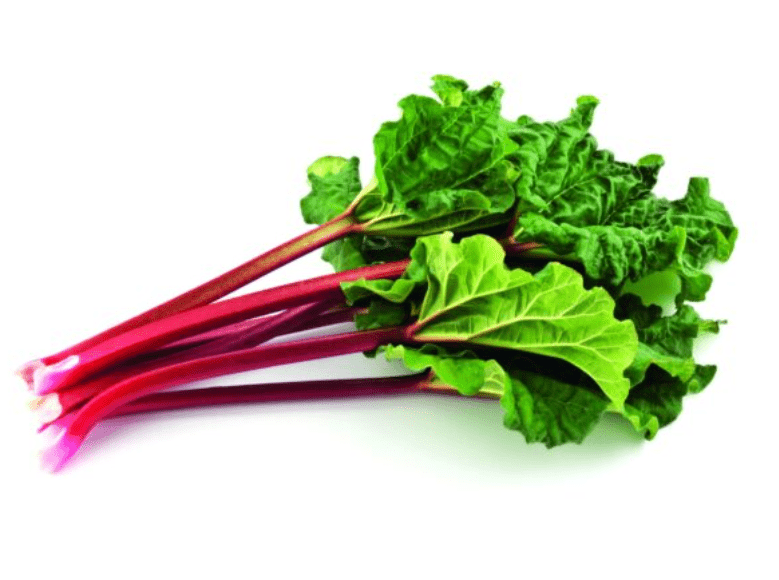
Safety Concerns with Rhubarb Leaves
Toxicity of Rhubarb Leaves
Rhubarb leaves may be toxic, but that doesn’t mean we should overlook the benefits and beauty of the plant. It’s important to handle Rhubarb leaf with caution and never consume them, as they can cause health issues. However, there are still ways to safely use Rhubarb leaf in your garden and kitchen. By understanding the potential risks and taking proper precautions, you can enjoy the beauty and benefits of Rhubarb leaf without putting your health at risk. So, don’t let the toxicity of rhubarb leaves discourage you from enjoying all that this versatile plant has to offer. Just be mindful and take necessary precautions to stay safe while using it.
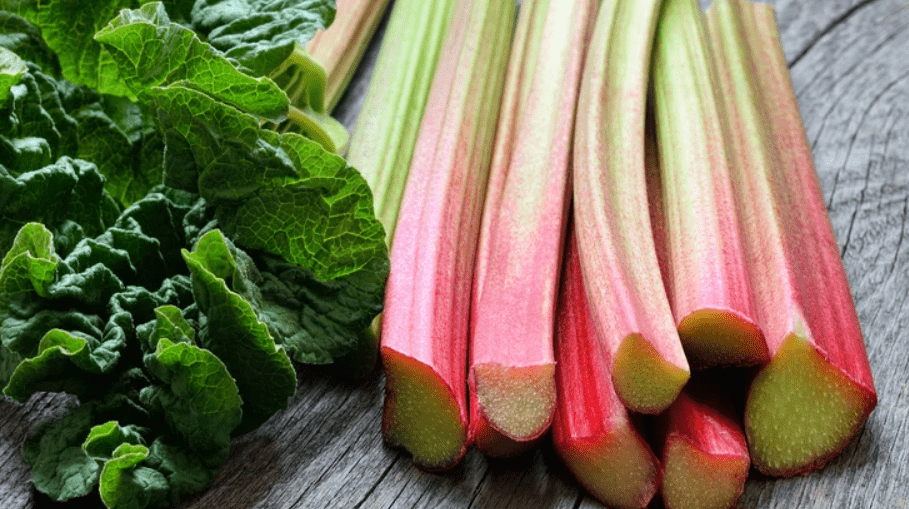
Handling and Disposal
When it comes to handling rhubarb leaves, it’s important to remember that they contain toxic substances and should never be consumed. However, this doesn’t mean that you can’t enjoy the beauty and benefits of the plant. When working with rhubarb leaves, it’s crucial to wear gloves and wash your hands thoroughly after handling them to avoid any potential skin irritation. Additionally, be sure to keep pets and children away from the leaves to prevent accidental ingestion.
When it comes to disposal, it’s best to compost the leaves rather than throwing them in the trash. By composting, you can still harness the nutrients from the leaves and use them to benefit your garden. Just be sure to keep them separate from any edible plants to avoid any cross-contamination.
By taking these precautions and understanding the potential risks, you can still enjoy the beauty and benefits of Rhubarb leaf while keeping yourself and others safe. Always prioritize safety when working with potentially toxic plants, and don’t let the risks deter you from exploring all that rhubarb has to offer.
Uses and Benefits of Rhubarb Leaves
Non-Culinary Uses
Rhubarb leaf may not be safe for consumption, but that doesn’t mean they don’t have other valuable uses. In fact, Rhubarb leaf can be used in a variety of non-culinary ways that make them a valuable addition to your home and garden. From natural pest control to fertilizer, there are plenty of reasons to hold onto those vibrant green leaves.
One of the most common non-culinary uses of rhubarb leaves is as a natural insect repellent. Simply place the leaves around your garden or in problem areas to deter pesky pests like slugs and snails. The oxalic acid in the leaves acts as a natural deterrent, keeping your plants safe from harm.
Additionally, rhubarb leaves can be used to make a potent organic pesticide. By boiling the leaves and creating a spray, you can effectively control aphids and other garden pests without the use of harmful chemicals. This natural approach is not only effective but also safer for the environment.
In addition to pest control, rhubarb leaves can also be utilized as a natural fertilizer. By composting the leaves, you can harness their nutrients and use them to enrich the soil in your garden. This sustainable approach not only reduces waste but also promotes healthy, vibrant plant growth.
When using rhubarb leaves for non-culinary purposes, it’s important to handle them with care. The oxalic acid in the leaves can cause skin irritation, so be sure to wear gloves when handling them. After use, be sure to wash your hands thoroughly to avoid any potential irritation.
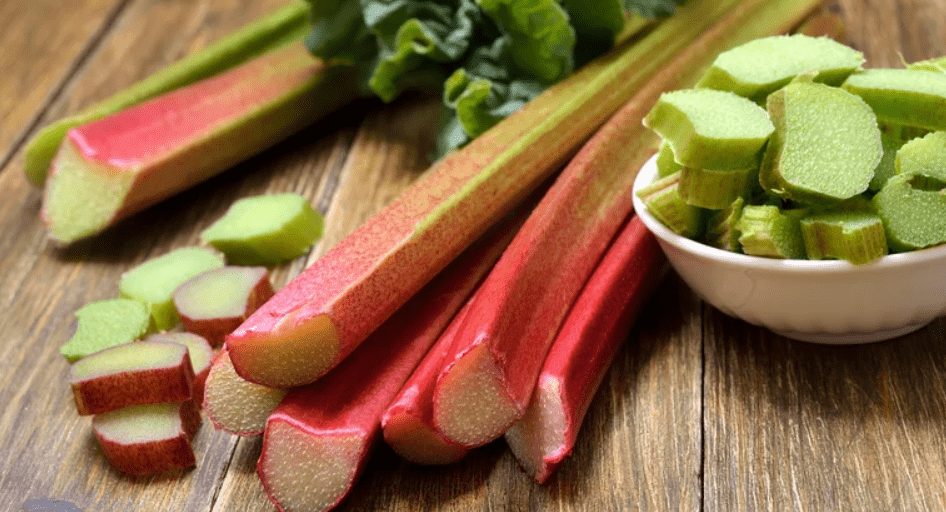
By understanding the non-culinary benefits of rhubarb leaves and taking appropriate safety precautions, you can make the most of this versatile plant while keeping yourself and your garden safe. Don’t let the potential risks deter you from exploring all the ways rhubarb leaves can enhance your home and garden.
Educational Uses
Rhubarb leaves can be used in a variety of educational settings to teach students about the natural world and the importance of sustainability. By incorporating rhubarb leaves into lesson plans, students can learn about the composting process and the benefits of using organic materials to enrich the soil. They can also explore the potential risks associated with handling rhubarb leaves and the importance of taking safety precautions. Additionally, students can gain hands-on experience by using rhubarb leaves for non-culinary purposes, such as creating natural dyes or crafting materials. By educating students about the versatile uses of rhubarb leaves, we can inspire them to think creatively and sustainably while fostering a deeper appreciation for the natural world. Let’s seize the opportunity to use rhubarb leaves as a valuable educational resource and empower students to make a positive impact on the environment.
Growing Rhubarb and Leaf Care
Planting Rhubarb
is a great way to add a unique and delicious plant to your garden. Rhubarb is a low-maintenance, perennial plant that is perfect for beginner gardeners and experienced green thumbs alike. When planting rhubarb, it’s important to choose a location with well-drained soil and plenty of sunlight. Rhubarb plants also need to be properly spaced to allow for their large size and spread, so be sure to give them plenty of room to grow.
When it comes to caring for rhubarb leaves, it’s important to handle them with care. The leaves contain oxalic acid, which can be toxic if ingested in large quantities. While the stalks of the rhubarb plant are safe to eat, it’s important to properly dispose of the leaves and avoid using them in compost or mulch. By following these safety precautions, you can enjoy the beauty and bounty of your rhubarb plant without any worries.
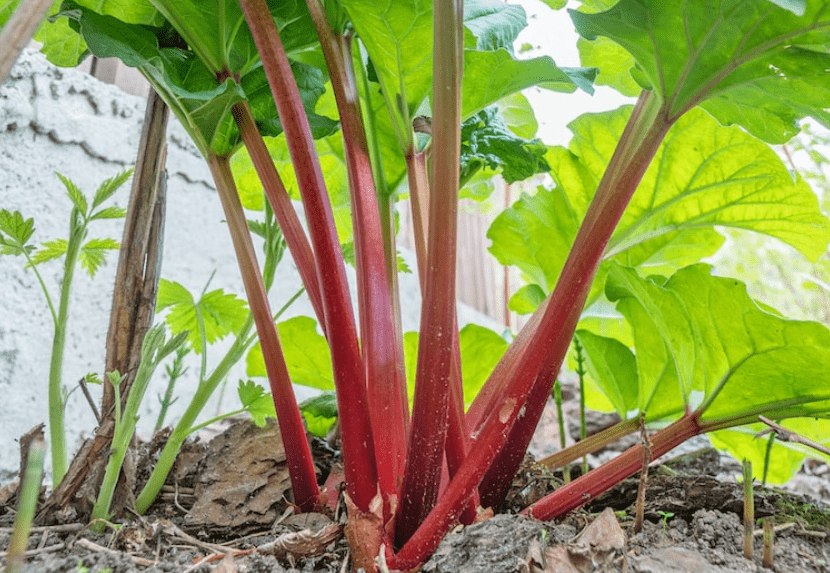
So, don’t let the potential risks deter you from exploring all the ways rhubarb leaves can enhance your home and garden. Planting rhubarb can be a rewarding and educational experience, and with proper care, you can enjoy a bountiful harvest of delicious rhubarb stalks. Let’s embrace the opportunities that rhubarb leaves provide and create a flourishing, sustainable garden for the future.
Leaf Care and Maintenance
When it comes to caring for your plant’s leaves, it’s important to handle them with care and attention. Proper leaf care and maintenance are essential for the health and growth of your plants. Regularly inspect the leaves for any signs of disease or pests, and remove any damaged or diseased leaves to prevent the spread of infection. Additionally, make sure to water your plants regularly and provide them with the necessary nutrients to promote strong, healthy leaf growth.
Taking good care of your plant’s leaves is not only important for the health of the plant, but it also adds to the beauty of your garden. Healthy, vibrant leaves can bring life and color to your outdoor space, creating a welcoming and enjoyable environment for you and your family.
So, take the time to give your plant’s leaves the care and attention they deserve. With proper maintenance and care, you can enjoy a thriving and beautiful garden for years to come. Let’s commit to providing the best care for our plant’s leaves and create a lush, green oasis for all to enjoy.
Harvesting Rhubarb
Is an important part of gardening and can be a rewarding experience. When it comes to harvesting rhubarb, it’s important to wait until the plant is at least two years old before you start harvesting. This allows the plant to establish a strong root system and ensures a healthy harvest in the future.
When it comes to actually harvesting the rhubarb, it’s important to only harvest the stalks and leave the leaves on the plant. The leaves contain oxalic acid, which is toxic to humans and animals, so it’s best to avoid consuming them.
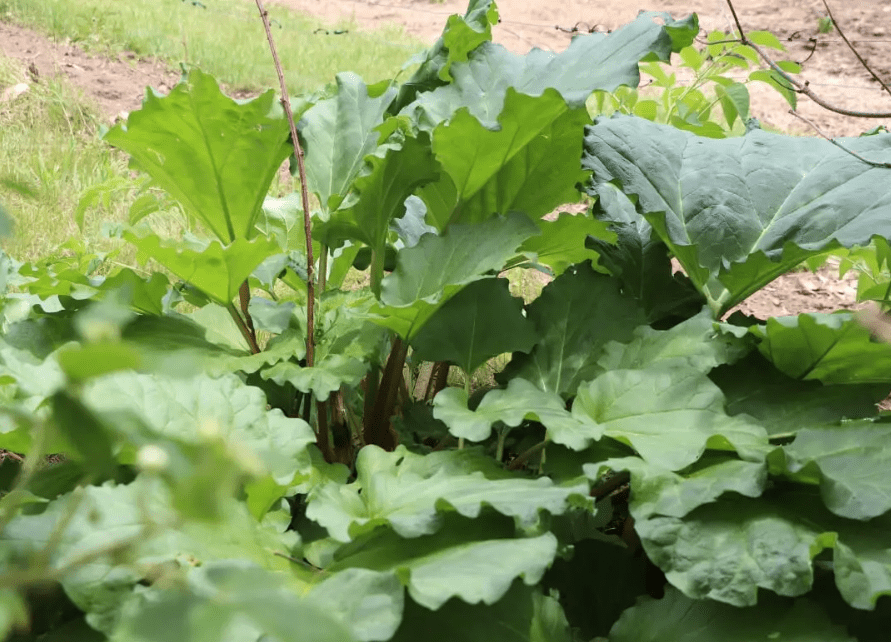
To harvest the stalks, simply grab them at the base and twist them gently to pull them out of the plant. Make sure to leave at least a few stalks on the plant so that it can continue to grow and thrive.
After harvesting, be sure to remove any leaves or debris from the plant and dispose of them properly. This will help prevent the spread of disease and pests in your garden.
Overall, harvesting rhubarb can be a fun and satisfying task, but it’s important to do it properly to ensure the health and longevity of your plants. With the right care and attention, you can enjoy a bountiful rhubarb harvest for years to come.
Common Problems and Solutions Related to Rhubarb Leaves
Pest and Disease Management
Rhubarb is a delicious and nutritious plant, but it can also be susceptible to pests and diseases. It’s important to be proactive in managing these issues to ensure the health and productivity of your rhubarb plants. One common problem is the presence of aphids, which can damage the leaves and stems of the plant. To manage this issue, you can use insecticidal soap or neem oil to effectively control aphids and prevent further damage.
Another common issue is the development of fungal diseases such as powdery mildew and crown rot. To prevent these diseases, it’s essential to maintain good airflow around the plants and avoid overwatering. If you notice any signs of fungal disease, remove and dispose of the affected leaves and stems to prevent spread to other plants.
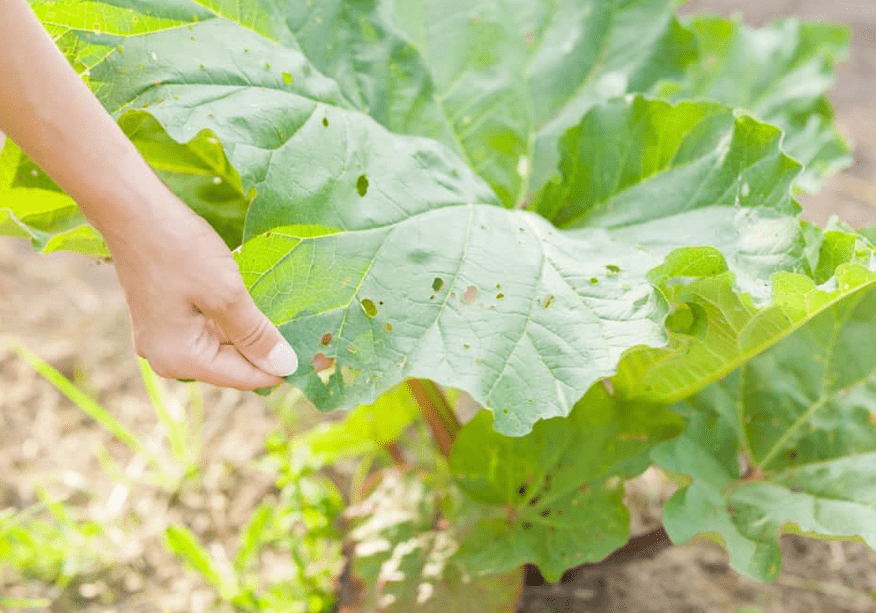
It’s also important to keep an eye out for signs of pests and diseases and take action promptly to address them. By staying vigilant and implementing proactive pest and disease management strategies, you can ensure the health and productivity of your rhubarb plants, leading to a bountiful harvest for years to come.
Leaf Degradation
Is a common issue that can impact the health and productivity of your plants. It’s important to be proactive in addressing this issue in order to ensure the overall well-being of your plants. One common problem is the presence of aphids, which can damage the leaves and stems of the plant. To manage this issue, you can use insecticidal soap or neem oil to effectively control aphids and prevent further damage. Additionally, it’s essential to keep an eye out for signs of fungal diseases such as powdery mildew and crown rot. To prevent these diseases, it’s important to maintain good airflow around the plants and avoid overwatering. If you notice any signs of fungal disease, remove and dispose of the affected leaves and stems to prevent spread to other plants. By staying vigilant and implementing proactive pest and disease management strategies, you can ensure the health and productivity of your plants, leading to a bountiful harvest for years to come. Don’t ignore leaf degradation – take action to protect your plants and ensure their long-term success.
Toxicity Management
Is essential for maintaining the health and productivity of your plants. It’s important to be proactive in managing issues such as aphids and fungal diseases in order to prevent damage and ensure a bountiful harvest. By using insecticidal soap or neem oil to control aphids and maintaining good airflow to prevent fungal diseases, you can effectively manage these issues. Don’t ignore signs of leaf degradation – take action to protect your plants and ensure their long-term success. With proper toxicity management, you can keep your plants healthy and thriving for years to come.
Sustainable Practices and Rhubarb Leaves
Eco-Friendly Gardening
is essential for maintaining a healthy and thriving garden. By using sustainable practices such as composting, using natural fertilizers, and conserving water, you can reduce your environmental impact and create a more eco-friendly garden. Additionally, using rhubarb leaves as a natural pesticide can help to control pests in your garden without harming the environment. By taking a proactive approach to pest and disease management and implementing sustainable practices, you can create a garden that is not only beautiful and productive, but also environmentally friendly. Don’t ignore the signs of environmental degradation – take action to protect your garden and ensure its long-term success. With eco-friendly gardening practices, you can create a thriving and sustainable garden for years to come.
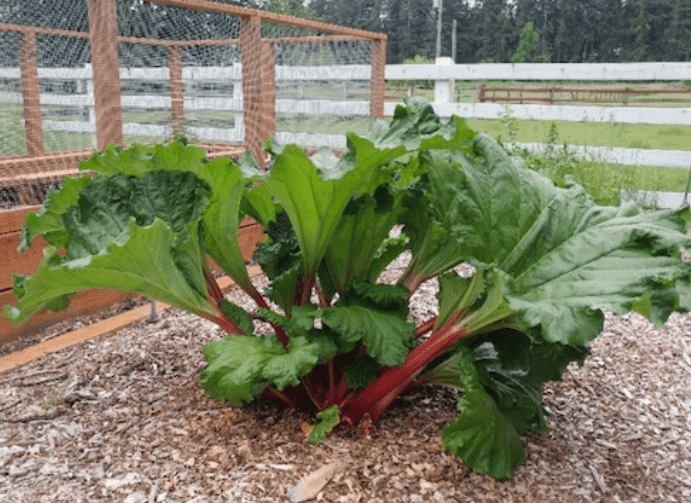
Composting and Mulching
Are two essential practices for maintaining a healthy and thriving garden. Composting allows you to recycle organic materials such as vegetable scraps, coffee grounds, and yard waste to create nutrient-rich soil for your plants. This not only reduces waste but also provides your garden with natural, sustainable fertilizer. Mulching, on the other hand, helps to conserve water, suppress weeds, and regulate soil temperature. By using natural materials such as wood chips, straw, or leaves, you can create a protective layer over your soil that promotes healthy plant growth and reduces the need for synthetic pesticides and herbicides.
Sustainable gardening practices are not only beneficial for your garden but also for the environment. By minimizing the use of synthetic chemicals and reducing waste, you can create a more eco-friendly garden that supports biodiversity and pollinators. Additionally, utilizing natural materials and organic practices can help to reduce your carbon footprint and minimize your impact on the planet.
When it comes to pest management, using natural solutions such as rhubarb leaves can be an effective and eco-friendly option. Rhubarb leaves contain oxalic acid, which can be used as a natural pesticide to control pests in your garden without harming the environment. By incorporating natural pest management techniques and sustainable practices, you can create a garden that is both beautiful and environmentally friendly.
In conclusion, while it may be tempting to use rhubarb leaves in cooking or gardening, it’s important to remember that they contain toxic substances that can be harmful if not used properly. It’s crucial to follow safety guidelines and only use the edible stalks of the rhubarb plant in your recipes. By doing so, you can enjoy the unique flavor of rhubarb while keeping yourself and others safe from potential health risks. So, remember to always prioritize safety when using rhubarb leaves and enjoy them in a responsible manner.
Frequently asked questions And Answer
No, you should never eat rhubarb leaves as they contain oxalic acid, which is toxic to humans.
While you should not consume rhubarb leaves, you can use them for non-edible purposes such as composting or as a natural insect repellent in your garden.
When handling rhubarb leaves, it’s important to wear gloves to avoid any potential skin irritation. Keep them away from children and pets to prevent accidental ingestion.
No, rhubarb leaves do not have any health benefits and should not be used in any medicinal or culinary applications.
If you or someone else accidentally ingests rhubarb leaves, seek medical attention immediately. It’s important to act quickly as the oxalic acid in the leaves can be harmful if ingested.
No, rhubarb leaves should never be used in cooking or baking as they are toxic to humans. Stick to using the rhubarb stalks in your recipes instead.
You can dispose of rhubarb leaves by composting them or throwing them away in a sealed bag to prevent accidental ingestion by animals or children.
Yes, you can use other non-toxic plants and herbs for composting or as natural insect repellents in your garden. It’s best to avoid using rhubarb leaves altogether to ensure safety.
